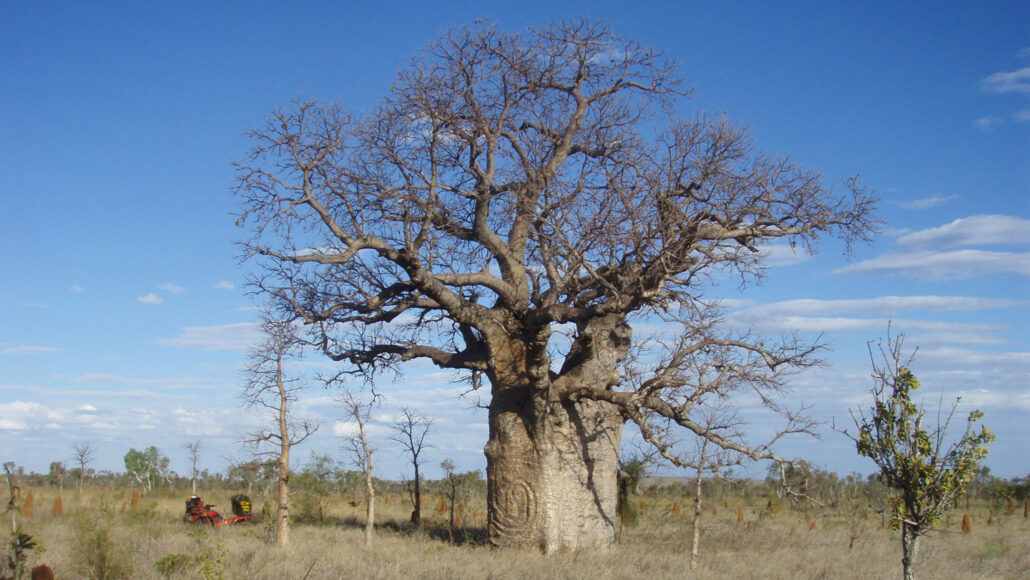Carvings on Australia's boab trees reveal a people's lost history
Researchers and an Aboriginal family are racing against time to find ties to the land

This boab is engraved with the image of a snake. It’s one of 12 carved trees rediscovered during a 2021 expedition into Australia’s Tanami Desert. The carvings have cultural ties to the Jaru, an Aboriginal group from the Kimberley region in northwestern Australia.
D. LEWIS
March 2, 2023 at 6:30 am
Brenda Garstone is on the hunt for her heritage.
Parts of her cultural inheritance are scattered across the Tanami Desert in northwestern Australia. There, dozens of ancient boab trees are engraved with Aboriginal designs. These tree carvings — called dendroglyphs (DEN-droh-glifs) — could be hundreds or even thousands of years old. But they’ve received almost no attention from Western researchers.
That is slowly starting to change. Garstone is Jaru. This Aboriginal group hails from the Kimberley region of northwestern Australia. In the winter of 2021, she teamed up with archaeologists to find and document some boab carvings.

A photo of Brenda Garstone as she stands next to a boab tree snake engraving
Brenda Garstone joined a research team on an expedition to look for boab trees with Jaru carvings. This boab is 5.5 meters (18 feet) around. It was the smallest carved tree found during the expedition.
S. O’CONNOR
For Garstone, the project was a bid to piece together parts of her identity. Those pieces were scattered 70 years ago when Garstone’s mother and three siblings were separated from their families. Between 1910 and 1970, an estimated one-tenth to one-third of Aboriginal children were taken from their homes by the Australian government. Like many others, the siblings were sent to live at a Christian mission thousands of kilometers (miles) from home.
As teens, the siblings returned to their mother’s homeland and reconnected with their extended family. Garstone’s aunt, Anne Rivers, had been just two months old when she was sent away. One family member now gave her a type of shallow dish. Called a coolamon, it was decorated with two bottle trees, or boabs. Her family told Rivers that those trees were part of her mother’s Dreaming. That’s a name for the cultural story that connected her and her family to the land.
More:
https://www.snexplores.org/article/carvings-australia-boab-trees-lost-history-first-nation

